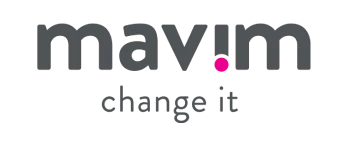Connection with the CMDB
Your view of of your IT portfolio in Mavim ITPM isn’t standalone; it works with the standard method for recording IT assets, a Configuration Management Database. A CMDB keeps all the details of your infrastructure – hardware, software, documents, even people – in one place for easy reference. And Mavim ITPM puts it to work.
- Works with standard method for listing assets
- No need to create a new asset repository
- Represents all IT assets in context
- Makes relations between assets clear
Communicate with the Business
Storing information is one thing; communicating it effectively is another. Mavim ITPM doesn’t just view information; it lets you exchange] it, with the capability to query CMDB data and represent in forms everyone in the business can understand, including Power BI dashboards. Meaning decisions and approvals can be made faster.
- Connects to other apps for easy viewing
- Lets you query and analyze data in PowerBI
- Turns asset data into viewable models
- Imports and exports data from other formats


Pre-Configured Frameworks
Every asset has a value. Some higher than others. Frameworks like Gartner’s TIME – built into Mavim ITPM – let you divide your assets into categories of Tolerate, Invest, Migrate, and Eliminate, letting you critically assess your IT for the actual value it adds to your business – and understand what impact any change you make to the IT landscape will have on business processes and the people who execute them.
- Widely recognized TIME model from Gartner
- Rank assets in terms of business value
- Assess impact based on asset valuation
Custom Reports & Dashboards
Mavim ITPM maps your assets graphically and visually, letting you see how objects across the infrastructure relate to each other. And it’s all backed up with numbers: dashboards, reports, charts and graphs that show you the Big Picture in deep detail.
- Standard reports built-in
- Custom reports easy to build
- Brings data together on dashboards
- Lets you share findings as intuitive visuals

Mavim can help you in your role
As a leader in financial operations, it is your job to balance cost structure with operational risks and controls with the aim of creating a lean, cost-efficient organization.
As an operations leader, you need to ensure your organization is maximizing customer value while limiting the costs it takes to deliver that value.
As an IT leader, you are faced with the challenge of investing in innovations to help your organization grow while reducing unnecessary IT spend and headcount.




